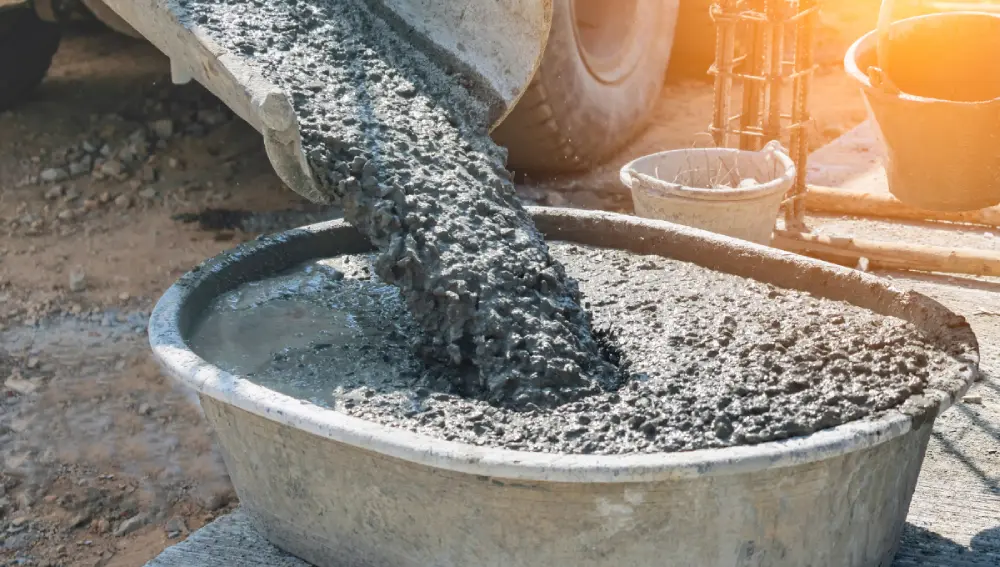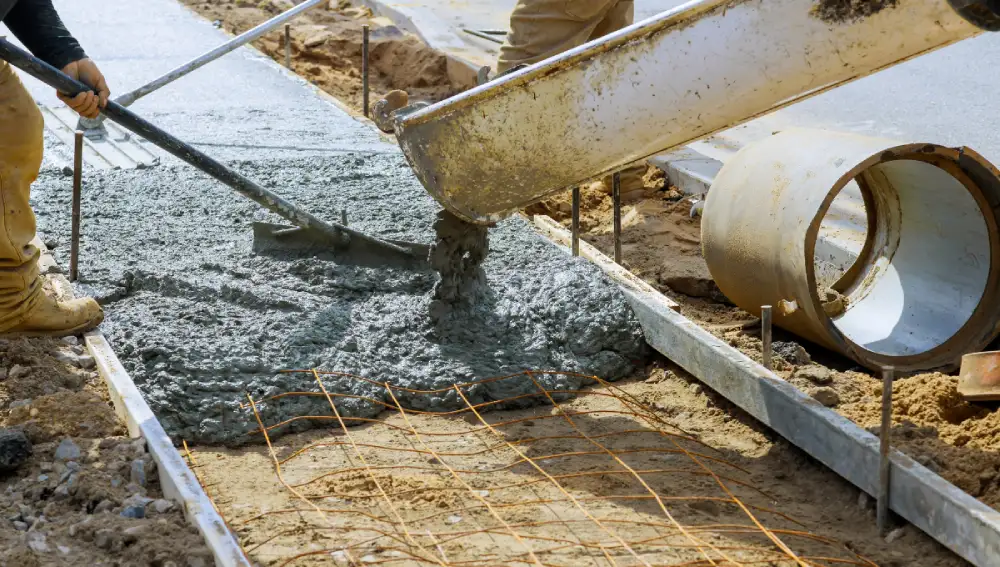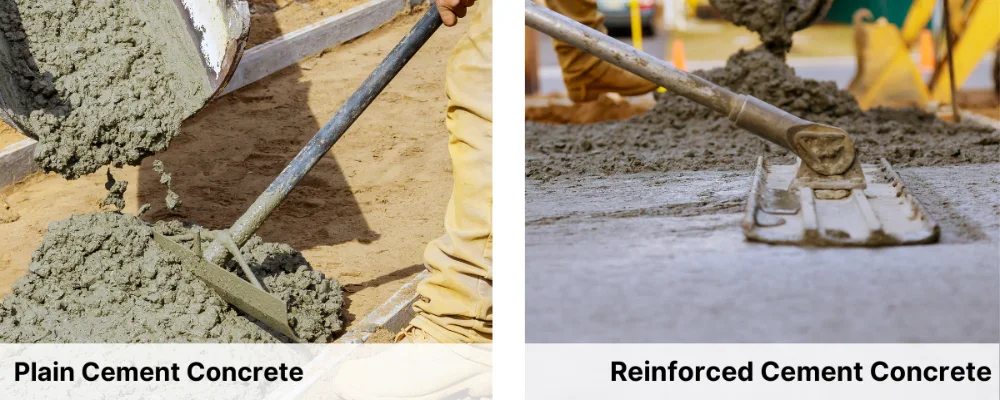Concrete is one of the most commonly used materials in construction. There are various types of concrete, each having its own function. Two of the most common concrete types that have been used in construction are plain cement concrete and reinforced concrete. By understanding the difference between PCC and RCC, construction builders can provide a material-based solution.
Meanwhile, This blog will provide the key differences between PCC and RCC for a better understanding.
PCC (Plain Cement Concrete)

The simplest form of concrete that does not have any reinforcement is PCC. It is normally used in structural components with less strength. Plain cement concrete is an important component for construction as it prevents direct contact between the concrete structure and the underlying soil or water. They are mainly used because of their compressive strength and are applied in areas in which the strength is not expected to be a significant load or in need of undergoing tension.
Materials used are,
- Coarse aggregate
- Fine aggregate (sand)
- Cement
- Water
The mix ratio of plain concrete cement is 1:2:4, where cement is one part, sand is two parts, and aggregates are four parts. Their main properties are compressive strength, durability, workability, longevity, shrinkage, and cracking consideration.
This material is commonly used in flooring, pavements, foundation footings, and other non-structural elements like garden paths, concrete blocks, and boundary walls.
RCC (Reinforced Cement Concrete)

The combination of steel bars and concrete to improve their durability and strength is called reinforced cement concrete. This helps them to withstand both the tensile stress as well as compressive stress. This can be used in the structural components that use more strength. They can be considered load-bearing structures. The steel reinforcement is normally attached to the concrete to create a material that can resist the shear, bending, and tensile force.
The main materials of RCC are,
- Sand
- Cement
- Aggregate
- Water
- Steel reinforcement
The reinforced cement concrete provides a combination of tensile strength and compressive strength with high durability and flexibility. They also have shrinkage and cracking control properties because of their reinforcement restraint.
Difference Between PCC and RCC
| Feature | PCC (Plain Cement Concrete) | RCC (Reinforced Cement Concrete) |
| Composition | Cement, sand, aggregate, and water | Cement, sand, aggregate, water, and steel reinforcement |
| Structural Strength | Designed to withstand compressive forces only | Combines compressive strength of concrete with tensile strength of steel reinforcement |
| Tensile Strength | Lacks tensile strength; cannot resist bending or tension | Possesses tensile strength due to steel reinforcement |
| Load-Bearing Capacity | Suitable for non-load-bearing applications only | High load-bearing capacity; suitable for structural components |
| Applications | Used in pavements, flooring, and non-structural elements | Used in columns, beams, slabs, as well as bridges that are structural elements |
| Durability | Durable in non-structural applications, may crack under tension | Highly durable, especially in structural applications, and resistant to cracking |
| Cost | Generally less expensive due to absence of steel reinforcement | More expensive due to steel reinforcement and additional labour requirements |
| Construction Technique | Simple construction process; involves mixing, pouring, and curing | More complex; involves reinforcement placement, concrete pouring, vibration, and curing. |
| Maintenance | Low maintenance in non-structural applications but may require resurfacing due to cracking | Requires regular maintenance to prevent corrosion of steel reinforcement |
| Crack Resistance | Susceptible to cracking and shrinkage | Better crack resistance due to steel reinforcement |
| Flexibility in Design | Limited flexibility in architectural design | Provides more flexibility in design, allowing for complex shapes and forms |
| Shock Resistance | Low shock resistance | High shock resistance due to the composite nature of RCC |
| Yield Strength of Steel | Not applicable as there is no steel reinforcement | Steel reinforcement typically 200–300 N/mm² or higher |
| Thickness | Typically between 50 and 75 mm, depending on the application | Thickness varies according to structural design requirements |
| Material Use | Suitable for minor construction where high strength is not required | Essential for major construction requiring high strength and durability |
| Environmental Resistance | Less resistant to environmental stresses; prone to weathering | Highly resistant to environmental conditions like temperature variation and moisture |
| Vibration Requirement | No vibration is required during construction | Vibration is required to remove air bubbles and ensure concrete compaction around the reinforcement |
| Curing Process | Standard curing methods like keeping the concrete moist for several days | Requires careful curing to ensure full hydration and strength development |
| Use of Equipment | Does not require specialised equipment for construction | Requires specialised equipment like vibrator |
| Testing | Simple testing of concrete strength | Testing involves both concrete and steel reinforcement |
Considerations in Choosing Between PCC and RCC
Requirements of the Project
In choosing between PCC and RCC, it is important to consider the specific requirements needed for the project. Plain cement concrete is mainly suitable for non-structural elements where the concern is compressive strength. However, reinforcement cement concrete is used in load-bearing structures that need high tensile strength and durability.
For example, PCC can be used for pavements and flooring if the construction is a residential building and RCC can be used as columns, beams, and slabs that can support the structure. This decision must be taken by considering the overall design of the project.
Environmental Factors
The conditions of the environment also affect the performance of the concrete structures. RCC is used in areas that have high-temperature changes, high levels of humidity, or any exposure to strong chemicals as they can improve the durability and resistance to cracking. PCCs are more susceptible to environmental stress, but they can perform well in some control environments, where there are not many changes in temperature or chemical attack.
Conclusion
It is important to understand the differences between RCC and PCC in the construction industry. PCC may be simple and cost-effective materials that are used in non-structural applications, while RCC is normally used in load-bearing structures and critical components as it provides strength and versatility. It is important to identify the correct material that is needed for the project by considering the demands and environmental conditions. The structures can be safe and stable if the proper type of concrete has been used.
FAQs
No, PCC is less resistant to environmental stresses.
Yes, RCC is highly resistant to temperature variation and moisture.
No, vibration isn’t required for PCC construction.
Yes, RCC requires vibration to ensure proper concrete compaction.
Yes, RCC construction is more complex due to reinforcement placement.
PCC requires low maintenance but may need resurfacing due to cracking.

